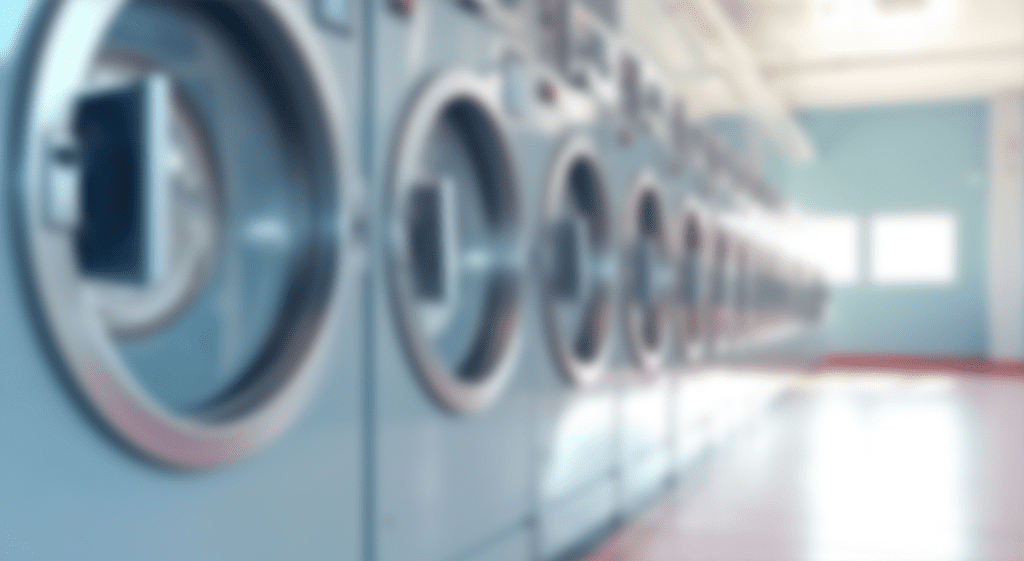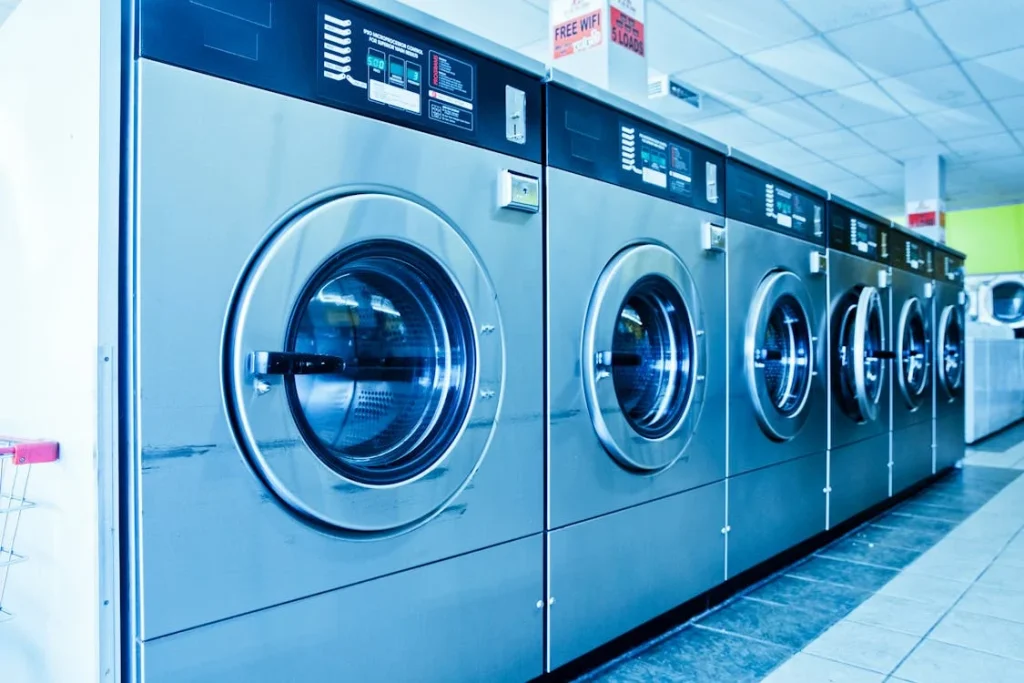Operating industrial washing machines is an essential part of various industries, from hospitality to healthcare, but it also comes with its fair share of risks. Ensuring safety when using these powerful machines isn’t just about keeping the machines in working order; it’s about protecting operators and workers from potential hazards. In this article, we’ll dive into the safety precautions you must follow to maintain a safe working environment while operating industrial washing machines.
Table of Contents
- 1. Introduction to Industrial Washing Machine Safety
- 2. Common Hazards in Industrial Washing Machine Operations
- 3. Key Safety Measures for Operators
- 4. Preventive Maintenance for Safety
- 5. Safety Features in Modern Industrial Washing Machines
- 6. Safe Handling of Detergents and Chemicals
- 7. Emergency Protocols and First Aid
- 8. Best Practices for Minimizing Risks
- 9. Conclusion
- 10. Frequently Asked Questions (FAQs)
1. Introduction to Industrial Washing Machine Safety

1.1. Importance of Safety in Industrial Laundry Operations
Industrial washing machines are powerful and efficient, designed to handle large volumes of laundry quickly. However, with such power comes responsibility. Safety should always be the top priority, as improper use or negligence can lead to serious accidents. Protecting the operators and those working around the machines can prevent costly downtime, injuries, and even fatalities. Safety precautions ensure a smooth workflow while promoting the well-being of all staff.
1.2. Risks Involved in Operating Industrial Washing Machines
Operating industrial washing machines can pose various risks. These include mechanical breakdowns, electrical issues, exposure to harmful chemicals, and even physical injuries like slips, trips, and falls. But these hazards can be mitigated with the right precautions, proper training, and regular maintenance. By following safety guidelines, operators can minimize risks and avoid accidents that could interrupt daily operations.
2. Common Hazards in Industrial Washing Machine Operations
2.1. Electrical Hazards
One of the primary risks when operating industrial washing machines is electrical hazards. These machines run on high-voltage power, making them dangerous if mishandled. Exposed wires, faulty wiring, or improper grounding can lead to electrical shocks or fires. It’s crucial to ensure that machines are properly maintained and that all electrical components are regularly inspected.
2.2. Mechanical Hazards
Mechanical hazards are also common in industrial washing machines. These machines have moving parts like drums, belts, and motors, which can cause injuries if they’re not properly safeguarded. The risk of being caught in moving parts or crushed by heavy machinery is real, which is why safety guards and emergency stop systems are non-negotiable.
2.3. Chemical Hazards
Chemical hazards arise from the detergents, solvents, and cleaning agents used in industrial laundry operations. These chemicals can cause skin irritation, respiratory issues, or even more severe health risks if not handled properly. It’s essential to store and use these chemicals according to the manufacturer’s instructions, with the right personal protective equipment (PPE) like gloves, goggles, and respirators.
2.4. Slips, Trips, and Falls
Wet floors are a common cause of accidents in industrial laundry rooms. Soap residue, detergent spills, or even water from washing machines can create slippery surfaces. These hazards can lead to slips, trips, and falls, which are among the most common workplace injuries. Keeping the area dry and clean, and promptly addressing spills, is a vital aspect of maintaining a safe environment.
3. Key Safety Measures for Operators
3.1. Proper Training and Certification
Proper training is the foundation of workplace safety. All operators should receive comprehensive training on how to use the industrial washing machines correctly and safely. This includes understanding the machine’s functions, recognizing warning signs of malfunction, and knowing how to handle emergencies. Certification programs can help ensure that operators are fully equipped to handle the job.
3.2. Wearing Appropriate Personal Protective Equipment (PPE)
Personal protective equipment (PPE) is essential for operators working with industrial washing machines. This includes gloves, safety glasses, face shields, and non-slip footwear. PPE helps protect against mechanical injuries, chemical exposure, and electrical hazards. Depending on the specific job, ear protection might also be necessary to prevent hearing damage from loud machines.
3.3. Keeping the Work Area Clean and Dry
Maintaining a clean and dry work area is one of the simplest yet most effective ways to prevent accidents. A clutter-free area ensures that operators have enough space to work and reduces the chances of tripping. Spills should be cleaned immediately, and wet floors should be addressed by placing anti-slip mats and warning signs where necessary.
4. Preventive Maintenance for Safety
4.1. Regular Inspection of Machines
Regular inspections of industrial washing machines are essential to prevent accidents and breakdowns. Routine checks should include looking for any worn-out parts, checking for leaks, and ensuring the electrical components are in good condition. It’s also important to inspect safety features like emergency stop buttons and automatic shut-offs to ensure they’re functioning properly.
4.2. Lubrication and Parts Replacement
Just like any other machinery, industrial washing machines require regular lubrication to keep moving parts working smoothly. Lack of lubrication can lead to overheating, friction, and potential failure of critical components. Routine maintenance, including the replacement of worn-out parts like belts and seals, ensures the machine operates efficiently and safely.
4.3. Routine Testing of Safety Mechanisms
Testing safety mechanisms like the emergency stop button, door locks, and automatic shut-off systems is a crucial part of preventive maintenance. Ensuring these systems work when needed can save lives and prevent major accidents. It’s also wise to keep a maintenance log so that any issues can be tracked and addressed promptly.
5. Safety Features in Modern Industrial Washing Machines
5.1. Automatic Shut-off Systems
Many modern industrial washing machines come equipped with automatic shut-off systems. These systems are designed to stop the machine in case of malfunction, power failure, or overheat, preventing further damage and reducing the risk of injury. Operators should familiarize themselves with the automatic shut-off procedures to respond effectively in case of an emergency.
5.2. Safety Door Locks
Safety door locks are critical for preventing accidents when the machine is in use. These locks ensure that the washing machine door cannot be opened while the drum is spinning, thus preventing injuries from high-speed movement. It’s important for operators to never override or tamper with safety locks to ensure the machine remains secure.
5.3. Emergency Stop Buttons
Emergency stop buttons provide an instant way to shut down the washing machine in the event of an emergency. These buttons should be easily accessible, clearly marked, and regularly tested to ensure they function when needed. In the event of an emergency, every operator should know exactly where the stop button is and how to use it.
6. Safe Handling of Detergents and Chemicals
6.1. Storing and Mixing Chemicals Safely
Chemicals used in industrial laundry operations should always be stored in a secure and well-ventilated area. Operators must follow all manufacturer guidelines regarding the handling, storage, and mixing of chemicals. Using proper storage containers and ensuring that chemicals are kept away from incompatible substances can prevent dangerous reactions or spills.
6.2. Handling Spills and Accidents
In case of chemical spills, immediate action is required to prevent injury. Operators should be trained in the proper spill response procedures, including using the correct neutralizing agents and cleaning materials. Having spill kits available and ensuring that all employees are familiar with their contents can significantly reduce the risk of harm.
6.3. Understanding Chemical Labels and Hazards
All chemicals used in industrial laundry operations should have clear and legible labels indicating potential hazards. Operators should be trained to read these labels and understand the dangers associated with each chemical. This knowledge helps ensure that the correct PPE is used and the chemical is handled safely.
7. Emergency Protocols and First Aid
7.1. What to Do in Case of Electrical Shock
If an operator experiences an electrical shock, the first step is to cut the power to the machine if it’s safe to do so. The person should be assessed for injuries, and emergency services should be contacted immediately. First aid for electrical shocks typically involves CPR if the person is unresponsive.
7.2. Responding to Mechanical Injuries
For mechanical injuries, such as getting caught in moving parts, it’s essential to stop the machine immediately and seek medical help. The injury site should be cleaned and bandaged until professional medical assistance arrives. Operators should always wear gloves and other PPE to minimize the risk of injury in the first place.
7.3. Managing Chemical Exposure
If an operator is exposed to hazardous chemicals, they should immediately rinse the affected area with water. For chemical burns, removing contaminated clothing and flushing the area with water is crucial. If symptoms persist, the individual should seek medical attention promptly.
8. Best Practices for Minimizing Risks
8.1. Never Override Safety Features
One of the most important safety rules is to never override safety features, like automatic shut-off systems or safety door locks. These features are designed to protect operators and prevent accidents. Disabling or bypassing these systems can lead to serious injuries or machine damage.
8.2. Avoid Blocking Vents or Airflow
Blocking vents or airflow can cause machines to overheat, leading to potential fires or malfunctions. Always ensure that ventilation systems are functioning properly and that there’s enough space around the machine for air to circulate freely.
8.3. Stay Alert and Focused
Operators should always stay alert and focused while operating industrial washing machines. Distractions can lead to accidents, especially in high-risk environments. Taking regular breaks, maintaining good communication with co-workers, and staying aware of the surroundings can help minimize risks.
9. Conclusion
Maintaining safety when operating industrial washing machines is essential for preventing accidents and ensuring smooth operations. By following safety measures like proper training, regular maintenance, and using personal protective equipment, operators can minimize risks and protect themselves and others in the workplace. Remember, safety isn’t just a set of rules—it’s a mindset. Prioritizing safety today will lead to a more efficient and accident-free tomorrow.
10. Frequently Asked Questions (FAQs)
What safety features should I look for in an industrial washing machine?
Look for features like automatic shut-off systems, safety door locks, and emergency stop buttons. These are essential for preventing accidents.
How often should industrial washing machines be inspected for safety?
Machines should be inspected at least once a month, with a more thorough inspection every three to six months, depending on usage.
Can I override the safety features if the machine is malfunctioning?
No, never override safety features. Doing so can put operators at risk and cause further damage to the machine.
What PPE should be worn when operating industrial washing machines?
Operators should wear gloves, safety glasses, non-slip shoes, and, in some cases, ear protection to prevent injuries from chemicals, electrical issues, or noise.
How do I handle a chemical spill in the laundry area?
Immediately contain the spill with appropriate absorbents, wear gloves and goggles, and follow the manufacturer’s spill response guidelines. Always have a spill kit available for emergencies.
Here are some other articles that we think might interest you:
Environmental Impact of Industrial Laundry


